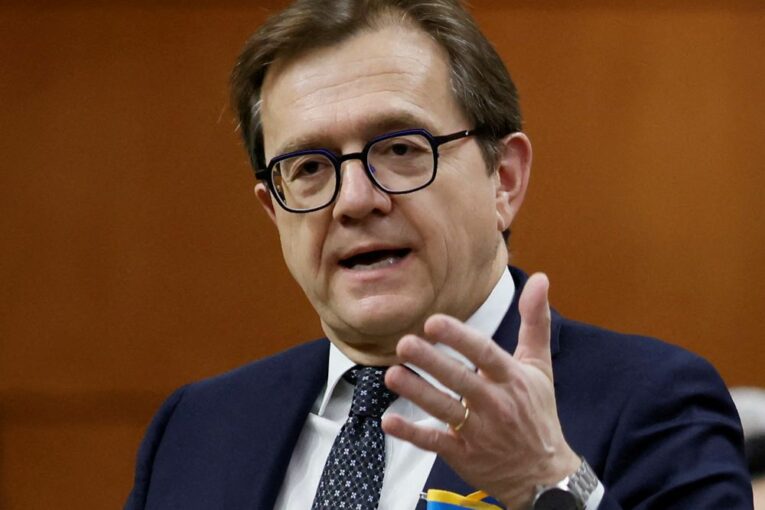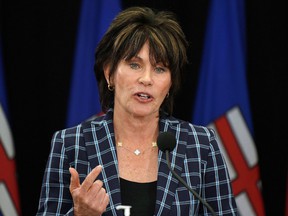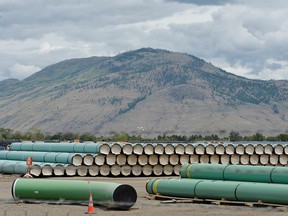
As the world’s fourth-largest oil and fifth-largest natural gas producer, Canada should play a major role in helping its allies pivot away from Russian energy.
In theory, that should be the case. The reality, however, is something else.
After meeting with International Energy Agency (IEA) members in Paris on Thursday, Natural Resources Minister Jonathan Wilkinson declared Canada will do its part to promote energy security and the global transition to net-zero emissions.
It seems like a nifty trick: boost output on one hand, while preparing to clamp down on greenhouse gas emissions on the other.
Canada’s industry has the ability to increase its output this year by up to 300,000 barrels of oil equivalent (boe) per day to help address supply shortages tied to Russia’s invasion of Ukraine, he announced.
This would include an additional 200,000 barrels per day (bpd) of oil and up to 100,000 boe per day of natural gas, “with the intention of displacing Russian oil and gas while not increasing global emissions,” states a government news release.
“We have our European allies who are facing the prospect of not being able to heat their homes,” Wilkinson told reporters.
“You can walk and chew gum at the same time. You can try to address energy security issues and climate issues concurrently, and that’s exactly what we’re doing.”
In reality, there’s a whole lot of chewing going on and not much walking.
An increase of 300,000 boe per day is helpful, no doubt, but it’s not a huge amount for a country producing more than 4.7 million barrels of oil and liquids per day, or more than 16 billion cubic feet (bcf) of marketable gas each day.
We could do so much more, over time, with more investment.
Yet, without additional big-ticket energy infrastructure in place — hello LNG plants — to trigger additional production, Canada’s ability to help will remain limited, both in the short and long terms.
“We have to be a lot more ambitious in the long run, because if we’re not, other countries will be,” Alberta Energy Minister Sonya Savage said in an interview.
“It is time to start treating our oil and gas reserves as a strategic asset, something to be proud of, rather than a liability to be phased out.”

Canada’s plan was released as energy and climate ministers from more than 40 governments met in Paris to discuss how to buttress energy security in the wake of Europe’s reliance on Russian oil and natural gas.
Russia is the world’s largest exporter of natural gas, supplying about 38 per cent of European Union demand, with Germany, France and Italy among the biggest customers. It is also the second-largest exporter of oil and condensate, selling 4.7 million bpd last year, with about half heading to Europe.
European countries are pushing to accelerate the energy transition and reduce their reliance on fossil fuels, but it will take time.
All IEA member countries are coming up with immediate measures to help with “one single target: reducing, radically, Russian oil and gas imports,” agency executive director Fatih Birol said.
U.S. Energy Secretary Jennifer Granholm expects domestic output to climb by about a million barrels per day.
In Canada, petroleum production will rise, yet it’s unlikely companies will sharply increase output — or advance major new projects — without more infrastructure to get oil and gas to market.
Longer-term developments such as the oilsands take years to complete, while U.S. shale producers can turn on the taps within months.
“While we have substantive reserves . . . we just don’t have a policy environment that encourages that investment,” said Ben Brunnen, a vice-president with the Canadian Association of Petroleum Producers.
“That is really the crux of the issue.”
Canada has a massive resource base capable of significantly increasing production.
However, export capacity remains a bottleneck if supplies rise sharply. Meanwhile, Ottawa is introducing a new cap on emissions from the oil and gas sector in 2025 as the country strives to meet its climate commitments.
Construction of the Trans Mountain pipeline expansion — moving western Canadian oil to tidewater — is behind schedule, while the Keystone XL, Northern Gateway and Energy East pipeline proposals have all perished.

While there were 18 separate proposals in recent years to build liquefied natural gas facilities off Canada’s west coast, only the massive LNG Canada development is under construction. The Coastal GasLink pipeline, being built by TC Energy to move gas from the Montney formation to the facility, faces ongoing opposition.
“We need federal and provincial government support to expedite facility approvals, to allow new pipelines to get built, and to essentially promote our Canadian natural gas industry, not diminish it,” said Mike Rose, CEO of Tourmaline Oil Corp. the country’s largest gas producer.
“The capital is out there for these projects, private capital . . . The pools of capital need assurance that there is a long-term commitment to growing Canada’s LNG business.”
Rose estimates Western Canada has the resource base to support up to 10 bcf a day of gas exports from facilities off the Pacific coast. Canadian LNG could displace higher-emitting sources of energy such as coal now used in other countries, he added.
None of this means Canadian producers can’t do more to lower their own emissions; they should. Most petroleum producers are investing time and money to curb their emissions per barrel, and most oilsands operators have set a target of net-zero emissions by 2050.
However, if Canada also wants to balance energy security considerations, a lot more production won’t arrive without federal policies that encourage future investment, and avoid stranding assets in the future.
“Two hundred thousand barrels a day isn’t going to solve the world’s energy security crisis,” said Savage.
“We need to be much more ambitious than that.”
Chris Varcoe is a Calgary Herald columnist.
You can read more of the news on source
